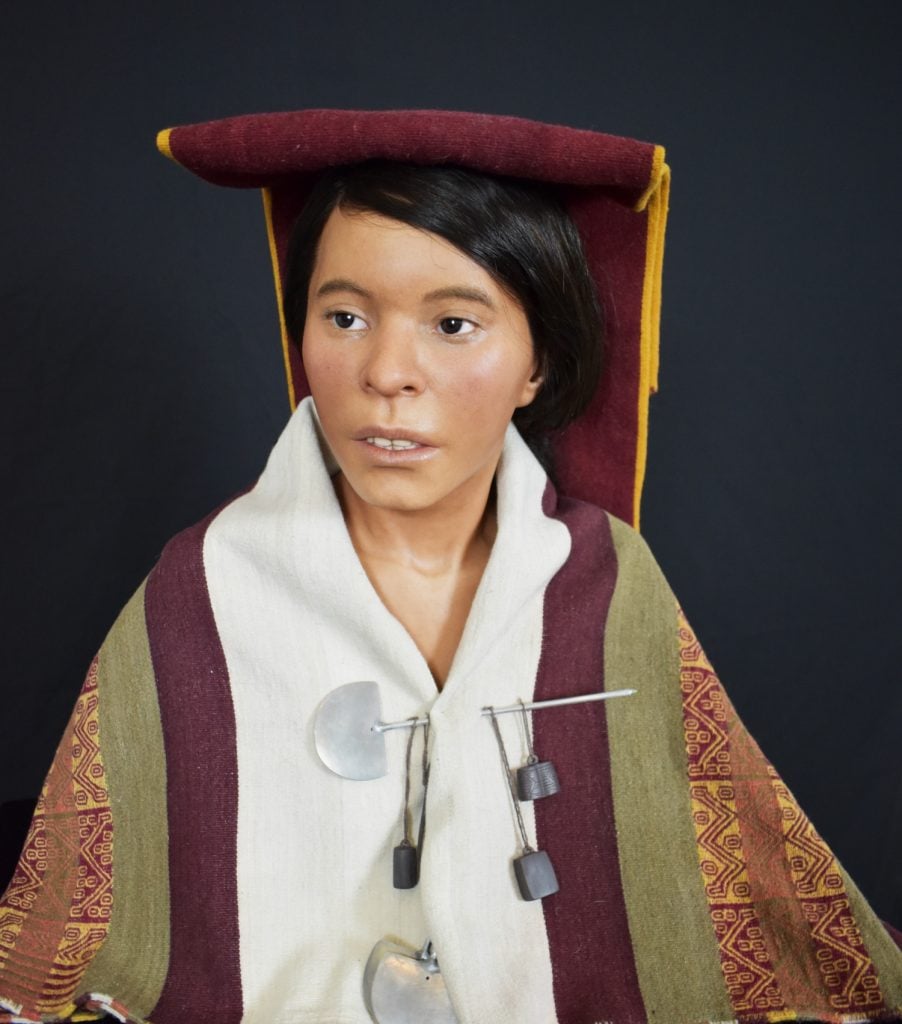Archaeology & History
What Did Peru’s Most Famous Mummy Actually Look Like? A New Silicon Bust Brings Her Back to Life
One of Peru's most well-preserved mummies, "Juanita" lay frozen in the Andes for 500 years.

One of Peru's most well-preserved mummies, "Juanita" lay frozen in the Andes for 500 years.

Jo Lawson-Tancred

It’s not always easy to imagine what a mummy might have looked like hundreds or thousands of years ago when they were living, breathing, and walking the earth. Thanks to sophisticated new facial reconstruction techniques, however, archaeologists have made major advancements in bringing these long-gone people back to life.
Peru’s most famous mummy, known as the Inca Ice Maiden or more familiarly as Juanita, was a teenage girl whose body was found frozen on top of Mount Ampato in the Andes in 1995. She had been a sacrifice to Inca gods around 500 years ago. She was unusually well-preserved, retaining her clothes, all her internal organs and even the contents of her stomach.
Working with Peruvian and Polish researchers, the Swedish facial reconstruction specialist Oscar Nilsson is responsible for bringing Juanita back, in the form of a silicon bust. The complex process is the result of various analyses, from skull measurements and body scans to studies of her DNA, her age, and ethnicity. The final result reveals a girl with high cheekbones, tanned skin, and dark eyes.
“The reconstruction was made using the Manchester technique,” the bioarchaeologist Dagmara Socha told Euronews. “Muscle by muscle, we used a previous study into the depth of the soft tissues to make everything correct.” This method, which combines the Russian Anatomical method and the American Anthropometrical method, was developed by British expert Richard Neave. It relies on the musculature of the skull and tissue depth markers, and is the most commonly practiced today.
Juanita’s body was found inside a bundle by the American anthropologist Johan Reinhard. “I thought I’d never know what her face looked like when she was alive,” he said. “Now, 28 years later, this has become a reality.”
The mummy was found wrapped up with other offerings, including llama bones, food, gold and silver figurines, and pieces of pottery. Analysis of her hair suggested she had the diet of one of society’s elite families, who regularly ate meat, and that she was fed alcohol and the drug coca before her death, as was common practice for child sacrifices. She was likely killed by a forceful blow to the back of the head, according to a CT scan performed at Johns Hopkins University.
These rituals were done for a range of reasons, including as part of a celebratory event or to ward off a natural disaster. For parents it was an honor to have their child selected for sacrifice and they believed the victims would have a happier existence in the afterlife. Juanita’s body is on public display at the Catholic University of Santa Maria’s Museum of Andean Sanctuaries in Arequipa, Peru.
More Trending Stories:
Revealed: The Major Mystery Consignors of New York’s Multi-Billion-Dollar Fall Auction Season
Christie’s Pulled Two Works by a Prominent Middle Eastern Artist From Sale After a Complaint